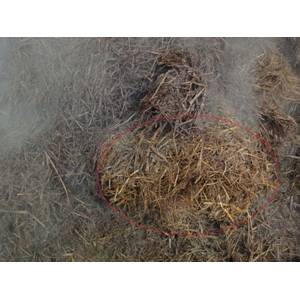Anaerobic compost – compost with no oxygen – is by definition a bad process. Oxygen is one of the most important elements in the composting process. If the computer shows the temperature in the compost rising above 80oC, this tells you that enough oxygen is getting into it. All good, you might think. But despite the nice graph on the computer, lower temperatures could be lurking in various places in the tunnel (at a height of about 70-120 cm). Here I explain how to check and prevent this.
Check for anaerobic compost by going into the tunnel and watching while it is being emptied. Always make sure the person operating the loader knows that you are going into the tunnel. Safety is paramount! If you watch as the compost is being removed, you will notice any anaerobic compost. Instead of dry-looking black-brown compost, you’ll see more watery yellowish-brown material.
If you can’t smell the compost or it smells sour, it is anaerobic. If it smells of ammonia, that’s good! The best way to smell the compost is to go and stand in the vapour left behind by the loader as it leaves.
Temperature is also a good indicator, so to measure is to know. A tunnel is generally measured with four sensors during the process. If possible. use a manual thermometer with a 1 m stem that measures the temperature at the tip. Then you can measure the temperature in different places and, importantly, at different heights. You’ll get to know the tunnel better and discover where any anaerobic patches are lurking.
There are various causes of anaerobic patches:
There are countless other causes, but you can often think of them yourself as a composter. Detection is usually the problem. So keep looking, smelling and measuring in the bunker!
Bron: Mushroom Blog – Mark den Ouden

Copyright © 2024 – All rights reserved
This website uses cookies to ensure you get the best experience on our website.